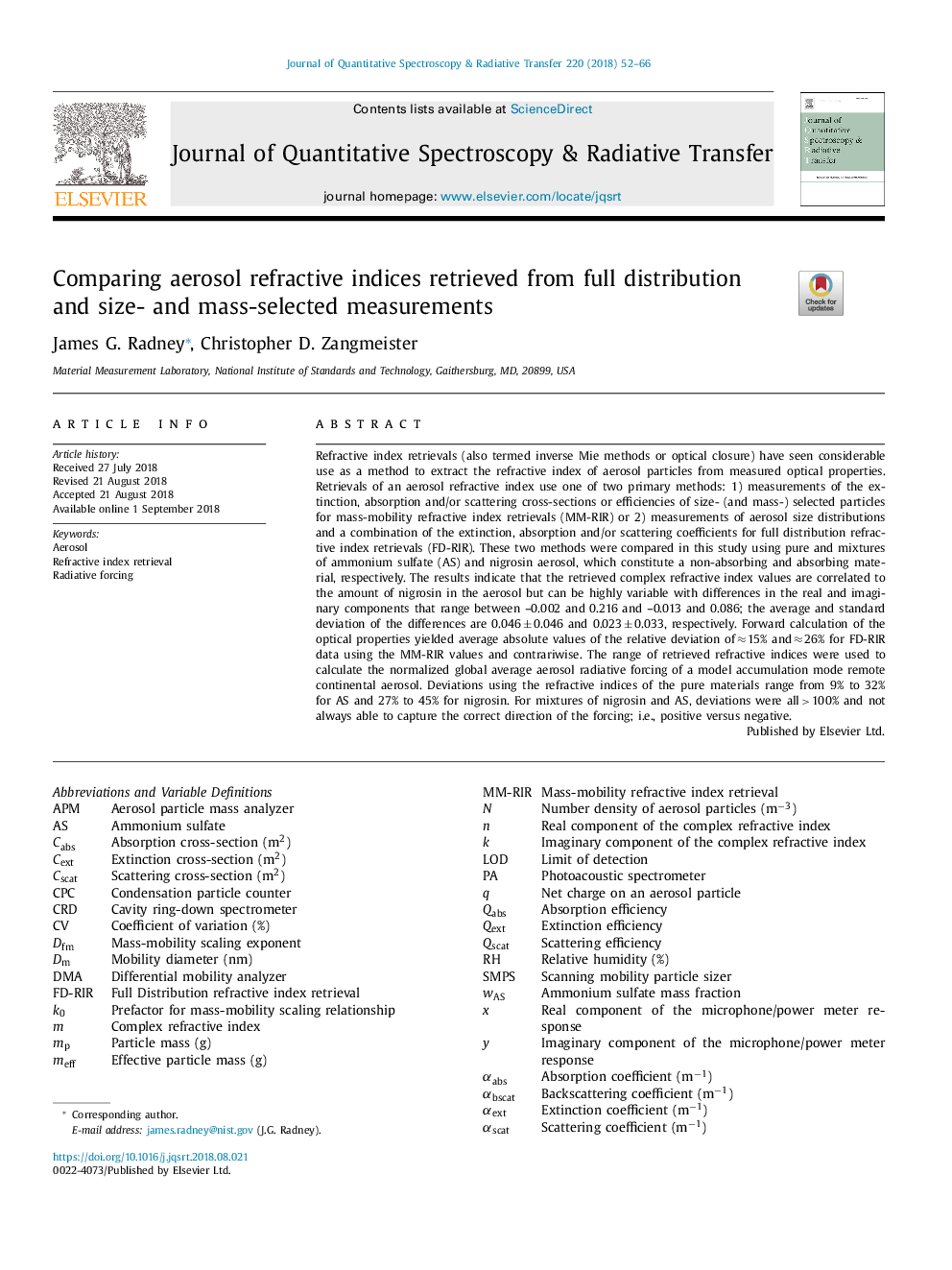| Article ID | Journal | Published Year | Pages | File Type |
|---|---|---|---|---|
| 10155147 | Journal of Quantitative Spectroscopy and Radiative Transfer | 2018 | 15 Pages |
Abstract
Refractive index retrievals (also termed inverse Mie methods or optical closure) have seen considerable use as a method to extract the refractive index of aerosol particles from measured optical properties. Retrievals of an aerosol refractive index use one of two primary methods: 1) measurements of the extinction, absorption and/or scattering cross-sections or efficiencies of size- (and mass-) selected particles for mass-mobility refractive index retrievals (MM-RIR) or 2) measurements of aerosol size distributions and a combination of the extinction, absorption and/or scattering coefficients for full distribution refractive index retrievals (FD-RIR). These two methods were compared in this study using pure and mixtures of ammonium sulfate (AS) and nigrosin aerosol, which constitute a non-absorbing and absorbing material, respectively. The results indicate that the retrieved complex refractive index values are correlated to the amount of nigrosin in the aerosol but can be highly variable with differences in the real and imaginary components that range between -0.002 and 0.216 and -0.013 and 0.086; the average and standard deviation of the differences are 0.046â¯Â±â¯0.046 and 0.023â¯Â±â¯0.033, respectively. Forward calculation of the optical properties yielded average absolute values of the relative deviation ofâ¯ââ¯15% andâ¯ââ¯26% for FD-RIR data using the MM-RIR values and contrariwise. The range of retrieved refractive indices were used to calculate the normalized global average aerosol radiative forcing of a model accumulation mode remote continental aerosol. Deviations using the refractive indices of the pure materials range from 9% to 32% for AS and 27% to 45% for nigrosin. For mixtures of nigrosin and AS, deviations were allâ¯>â¯100% and not always able to capture the correct direction of the forcing; i.e., positive versus negative.
Keywords
Related Topics
Physical Sciences and Engineering
Chemistry
Spectroscopy
Authors
James G. Radney, Christopher D. Zangmeister,
